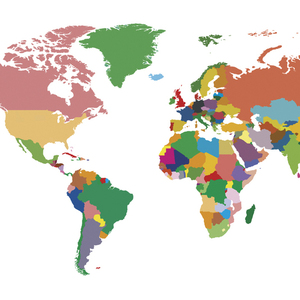USGC reports progress in ethanol export promotion

August 26, 2015
BY U.S. Grains Council
This marketing year’s U.S. ethanol exports are expected to be the second largest on record as ethanol export promotion efforts ramp up by the U.S. Grains Council (USGC) and its partners Growth Energy, the Renewable Fuels Association and USDA’s Foreign Agricultural Service.
“Efforts to promote increased exports of U.S. ethanol are showing progress, with global ethanol exports during the first 10 months of the current marketing year posting an 11 percent gain over last year’s numbers,” said USGC Chief Economist Mike Dwyer. “The Council now expects full year 2014/2015 ethanol exports to reach 850 million gallons and to be valued at $1.9 billion, up from 768 million gallons just last year.”
While 2015 exports of U.S. ethanol to Canada – the top international customer - are down 26 percent on a volume basis, all other major markets have shown increases due to strong demand and U.S. ethanol supplies that are competitively priced.
The second and third largest importers, Brazil and the Philippines, have grown 71 percent and 44 percent respectively to 135 million gallons and 71.2 million gallons. India and the United Arab Emirates round out the top five export markets for U.S. ethanol.
Other markets seeing significant growth during the first 10 months of 2014/2015 include Korea, Mexico, the European Union and Tunisia.
Korea, which imports U.S. ethanol primarily for industrial purposes, has increased imports of U.S. ethanol by 94 percent to 42.3 million gallons, and Mexico's imports have grown by 17 percent to 26.1 million gallons.
Tunisia’s imports of ethanol have increased 224 percent over 2014 tallies to a total of 30.7 million gallons. Despite stiff anti-dumping duties imposed on U.S. ethanol entering the EU, U.S. exports are up 27 percent in the first 10 months compared to 2013/2014 volumes, totaling 41.5 million gallons.
While this success is a good starting point, there is still much work to be done to keep ethanol exports growing. The Council and its partners have plans for ongoing work to promote U.S. ethanol as a clean-burning source of fuel to buyers and end-users around the globe including assessments in potential new markets; buyer team visits to the United States; and a series of workshops focusing on the environmental and economic benefits of ethanol use.
Advertisement
Advertisement
Advertisement
Advertisement
Related Stories
The U.S. exported 31,160.5 metric tons of biodiesel and biodiesel blends of B30 and greater in May, according to data released by the USDA Foreign Agricultural Service on July 3. Biodiesel imports were 2,226.2 metric tons for the month.
CARB on June 27 announced amendments to the state’s LCFS regulations will take effect beginning on July 1. The amended regulations were approved by the agency in November 2024, but implementation was delayed due to regulatory clarity issues.
Legislation introduced in the California Senate on June 23 aims to cap the price of Low Carbon Fuel Standard credits as part of a larger effort to overhaul the state’s fuel regulations and mitigate rising gas prices.
The government of Brazil on June 25 announced it will increase the mandatory blend of ethanol in gasoline from 27% to 30% and the mandatory blend of biodiesel in diesel from 14% to 15%, effective Aug. 1.
The U.S. EIA reduced its 2025 and 2026 production forecasts for a category of biofuels that includes SAF in its latest Short-Term Energy Outlook, released June 10. The forecast for 2025 renewable diesel production was also revised down.
Upcoming Events









